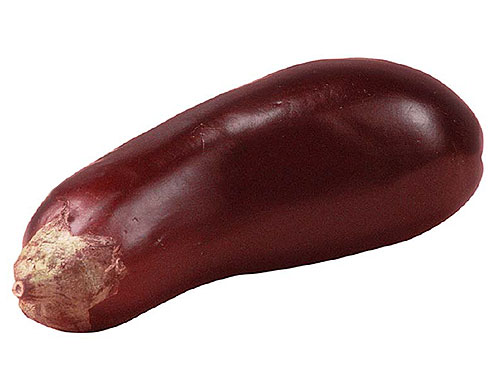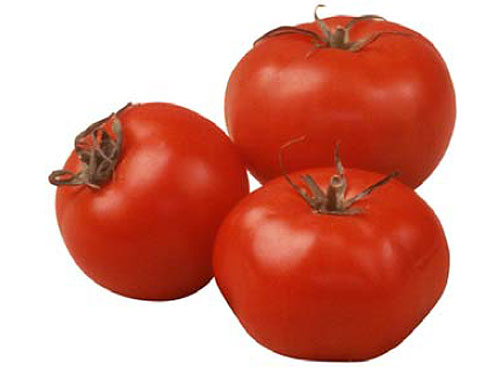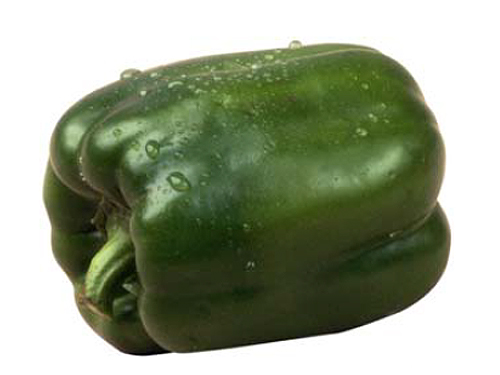
Fact Sheet FS011
If you find a dry, black, sunken area on the bottom of a tomato, it is Blossom End Rot (BER). It can occur on both green and red ripe fruits. You may see early ripe tomatoes only to discover when you look at the bottoms that they are affected with BER. On peppers and eggplant, it appears on the side or bottom of the fruits. The surface of the spot has a dry, leathery appearance.
The most frequently asked questions are:
- What causes it?
- What can I do to prevent it?
- Will it affect other fruits?
Blossom End Rot is a fruit disorder and not a disease caused by a fungus, bacterium, or a virus. It will not spread as a disease does, but more fruits will show the symptoms if the cause is not reduced. This rot is directly related to soil moisture and the need of the plant for calcium. BER will usually be more prevalent when the plants have been growing rapidly and luxuriantly early in the season and then are subjected to prolonged dry weather when the fruits are in an early stage of development.
When the plant is small, its requirement from calcium is less than when it is larger with fruits that are increasing in size. The plant also needs more water as it grows. If anything interferes with the ability of the roots to absorb enough water containing dissolved calcium, BER symptoms may appear. The ability of roots to take in water is reduced if the soil gets too dry, or if it gets so saturated for a period of time that there is insufficient oxygen for the roots to function. Cultivating too deeply and too close to the plants can cut off, and thus reduce, the number of roots available to absorb water and calcium.
What Can I Do?
A soil pH test should be done every 2-3 years to determine if lime is needed. "Calcitic" lime adds calcium to the soil. In addition, it corrects an excessively acidic condition that retards the uptake of calcium by the plant. There can be adequate calcium present in the soil, but if the plant cannot absorb enough, for any of the reasons mentioned, you can expect BER to appear.
The only control for this disorder is to maintain a soil pH between 5.8 and 6.3 and to keep the plants adequately watered in dry weather or properly drained in wet weather. Plants with fruit require about 1 inch of moisture each week. A rain gauge, sold at garden supply stores, will indicate if less than 1 inch fell during a week. You will know then how much you should add by watering to provide the 1 inch needed. It is easy to calculate how much water a sprinkler is applying. Using cans of the same size (such as soup, juice, or other food cans), place one can 3 feet from the sprinkler, and in a straight line out from the sprinkler, place additional cans at 3 to 4-foot intervals for a total of five or six cans.
Note the time and start sprinkling. Wait until you can measure ¼ inch of water on the average for all of the cans (a plastic or wood rule can be used). Now note the time. You would know that four times the elapsed time it took to get the ¼ inch will be needed to put 1 inch of water on the plants. Example: It took ½ hour for the cans to average ¼ inch of water. Therefore, 2 hours will be needed for 1 inch of water, the amount needed if no rain has fallen in 1 week. It is best to apply the total water needed in one application to make sure it penetrates into the root zone.
By giving sufficient water to the plants, BER can be reduced or eliminated. Pick off any affected fruits because they will not recover and will only drain moisture and calcium needed by healthy fruit. It is safe to eat the undamaged parts of fruits with Blossom End Rot. Merely cut away the blackened part.
For additional information on a variety of subjects, contact the Rutgers Cooperative Extension office in your county. You may also wish to visit our web site, njaes.rutgers.edu.
Examples of Blossom End Rot
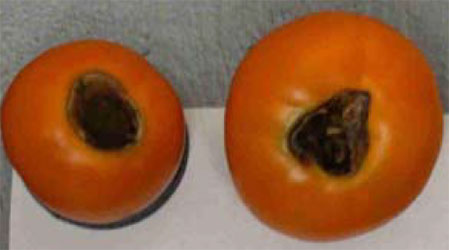
Tomato
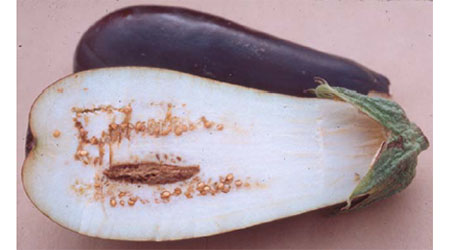
Eggplant
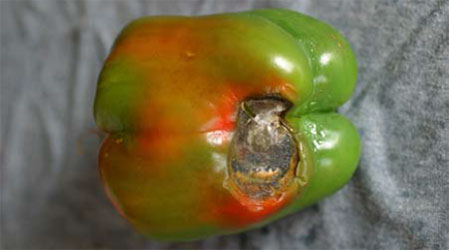
Pepper
Photos Courtesy of Wesley Kline
October 2003
Copyright © 2024 Rutgers, The State University of New Jersey. All rights reserved.
For more information: njaes.rutgers.edu.
Cooperating Agencies: Rutgers, The State University of New Jersey, U.S. Department of Agriculture, and Boards of County Commissioners. Rutgers Cooperative Extension, a unit of the Rutgers New Jersey Agricultural Experiment Station, is an equal opportunity program provider and employer.


